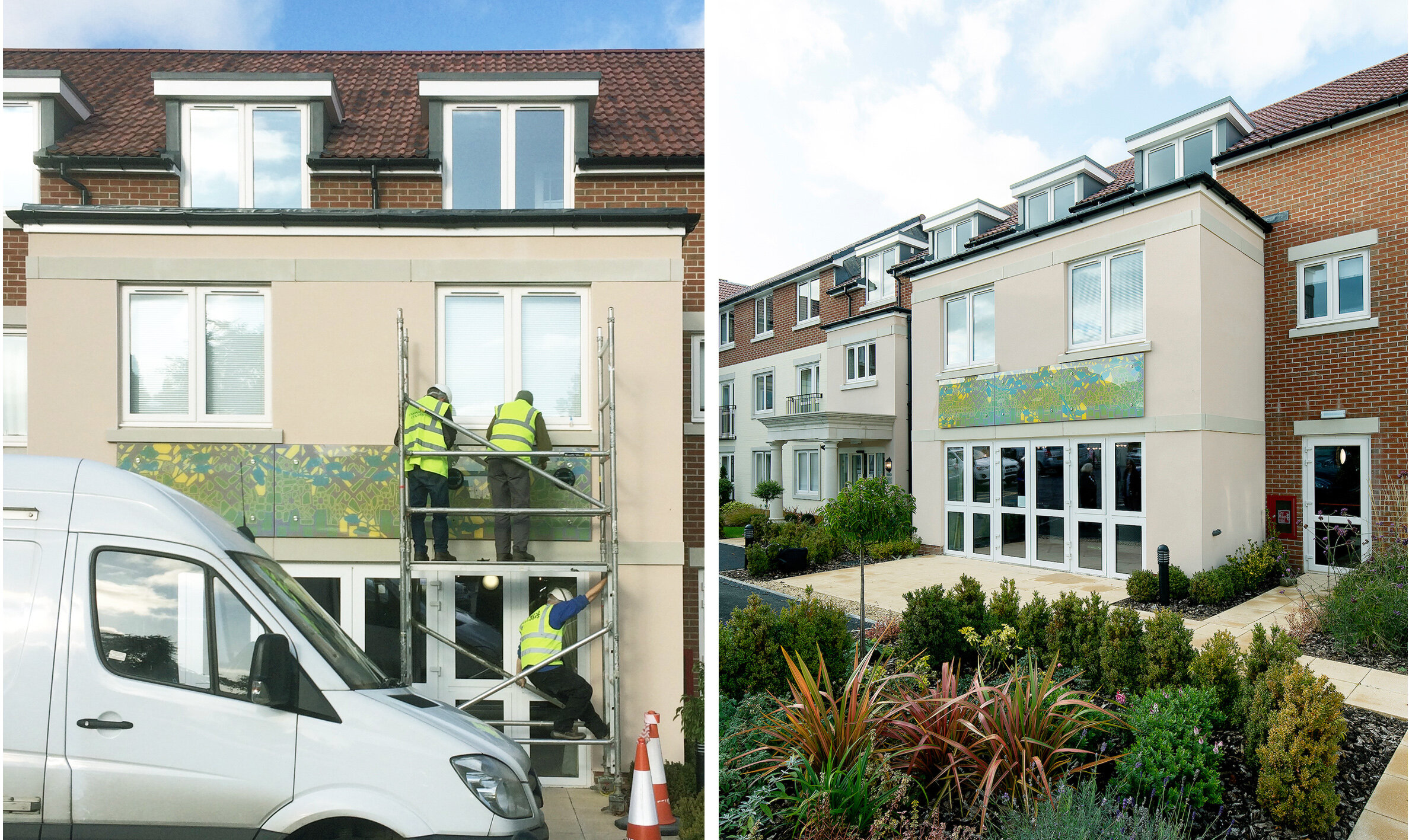Drawing 1 by Ray Ward, ink and acrylic on card. 236 x 320 mm
It was time to choose which of Ray’s drawings I wanted to turn into stained glass. Nothing he had on the walls in his studio jumped out at me, so I looked through some of his boxes of old drawings - sorted by size and paper type - to find some that did. The last panel I made (that’s not really a question…) had featured a waterfall, so I thought the river scene (above) would make a good companion. However, I mostly make my choice by finding a figure I want to do in glass and the man looking at the river was a bit small and sketchy. The figure in another box of slightly coloured drawings (below) looked perfect for glass painting, once I’d got Ray to add a pattern to her coat, and I thought the two drawings would combine together perfectly setting up an interesting story between the two figures.
Drawing 2 by Ray Ward, ink and acrylic on card. 210 x 297 mm.
Painted and sandblasted glass pieces on the lightbox
The resulting glass panel was quick to make. I saw her as a redhead and had the perfect piece of glass for that. The other colours, in the restricted palette that works best in these small pieces, followed from there. The completed panel (below) is practically opaque because of the heavy sandblasting combined with the types of glass I used and looks great photographed in my studio window, where normally too much green grass shows through.
‘Passersby Passing By’ Stained glass panel in daylight. 280 x 400 mm.
Detail of the redheaded figure showing different types of glass, some heavily sandblasted.
In a continuation of this collaborative process Ray then did a new painting, with a new title, of the same scene (below). I had imagined the setting as the mouth of a river with a boat going out to the sea which their eyes are gazing at. But the new barges and the more elaborate balustrading place the figures on the embankment somewhere along the Thames, and she’s got a quite different look in her eye.
Painting by Ray Ward
‘The universe shall pass away as a scroll’ Egg tempera and Indian ink on gesso ground. 310 x 435 mm.










